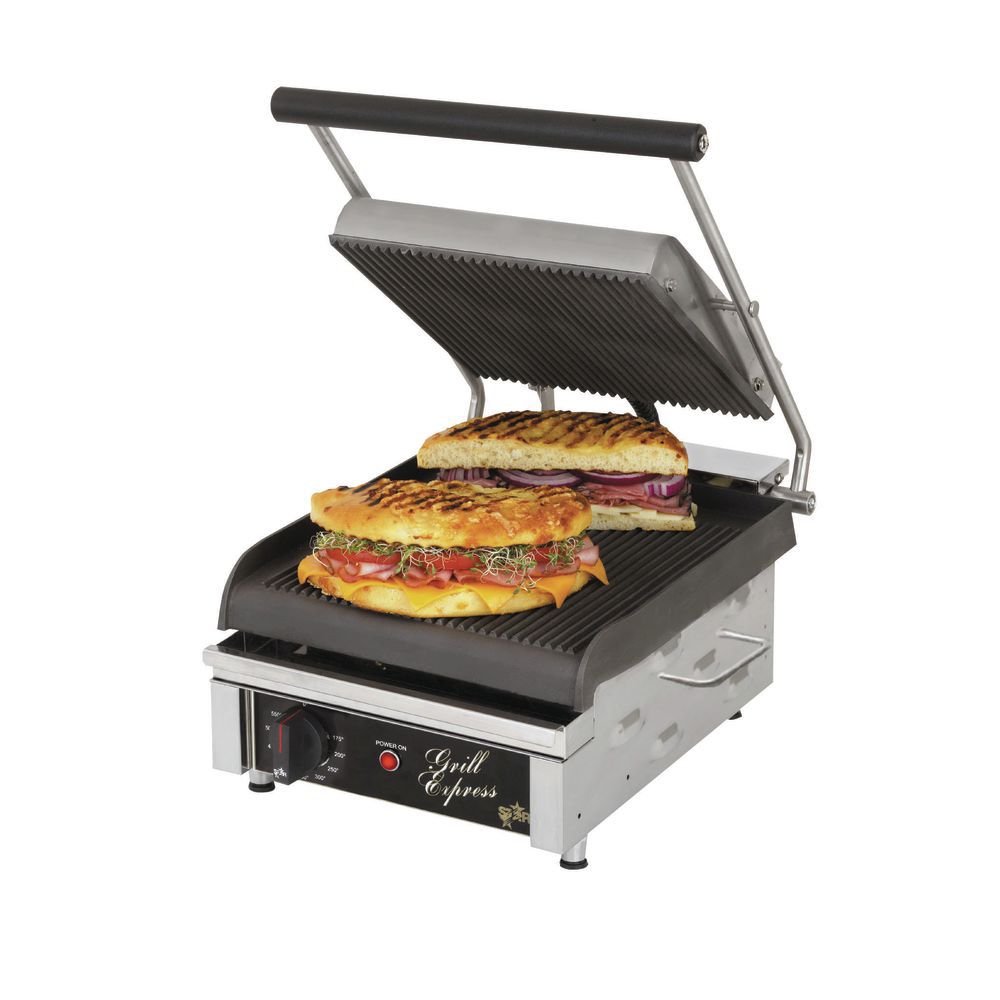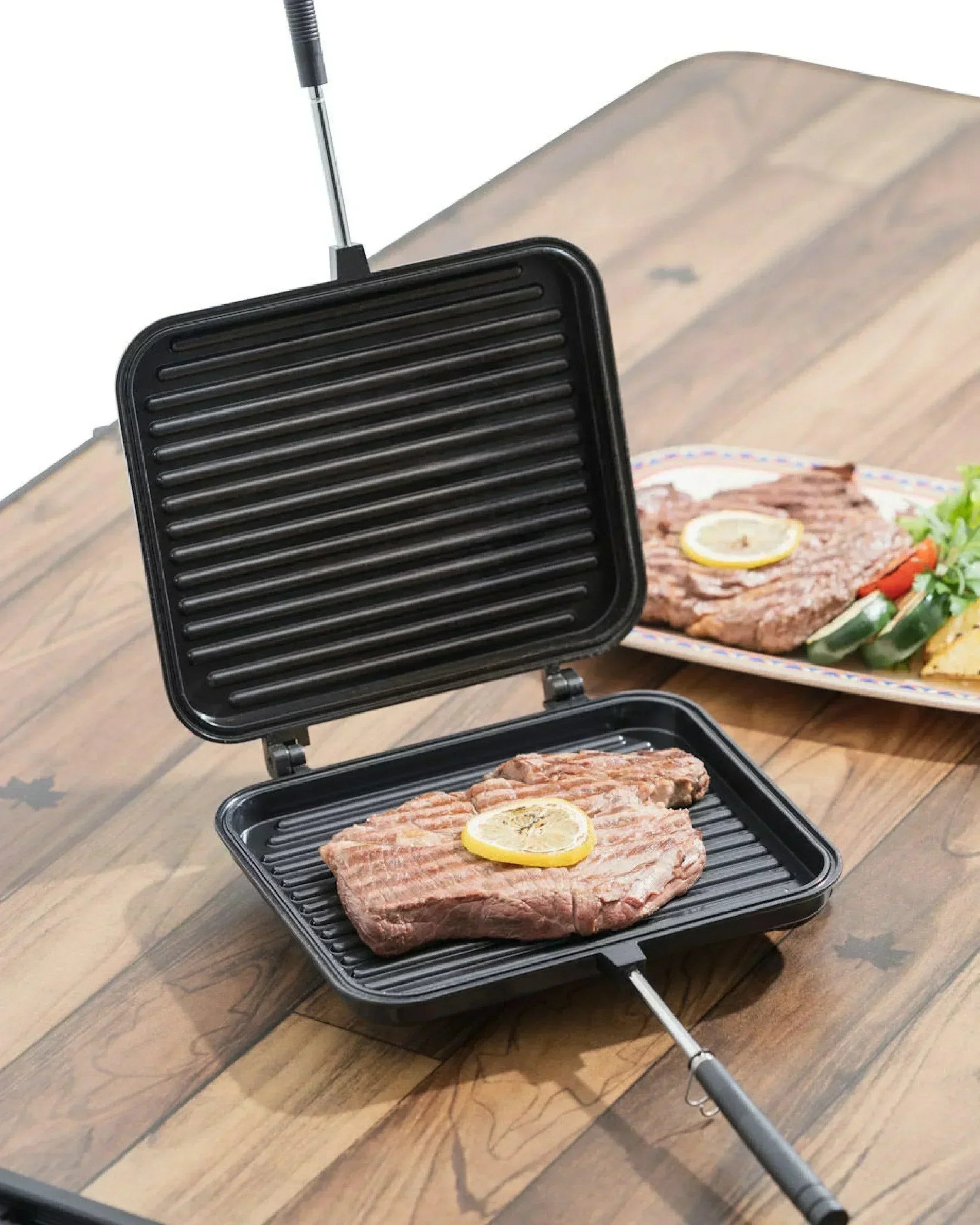Salamander grills are versatile, high-powered appliances essential in both commercial kitchens and upscale home environments. Known for their intense heat and precision, salamander grills are perfect for tasks like broiling, toasting, caramelizing, and adding the final touch to a variety of dishes. Commonly referred to as "salamanders," these unique appliances stand out from conventional ovens and grills. This guide explores the mechanics, variations, applications, and benefits of salamander grills, showing why they are crucial for culinary excellence.
What Is a Salamander Grill?
A salamander grill is a specialized broiling appliance primarily used in professional kitchens. With a compact design and a high-intensity heat source, salamander grills excel at high-temperature cooking, particularly in applications requiring browning, crisping, or melting. Unlike standard ovens, these grills use a top-down heating element, providing targeted heat and precise temperature management.
Capable of reaching temperatures as high as 1,500°F (815°C) in seconds, salamander grills are perfect for finishing dishes like gratins, toasting bread, melting cheese, and browning meats. Typically, they are either mounted on walls or placed on countertops, allowing for easy access and maximum efficiency in high-paced kitchens.
Core Features of Salamander Grills
Intense Heat Control
Salamander grills provide concentrated, high heat, making them ideal for quickly broiling or finishing dishes with a high degree of precision.
Adjustable Cooking Racks
Movable racks allow chefs to change the distance between the food and the heat source, allowing for perfect results on both delicate and dense foods.
Energy Efficiency
With rapid heat-up times and short cooking durations, salamanders are more energy-efficient than traditional ovens, making them a cost-effective choice for busy kitchens.
Compact Build
Their space-efficient design allows salamander grills to fit seamlessly into kitchens, maximizing heat output while occupying minimal space.
Versatile Culinary Applications
Due to their intense heat and speed, salamander grills are versatile tools, ideal for broiling meats, toasting bread, melting cheese, and caramelizing, among other tasks.

Types of Salamander Grills
Salamander grills are available in different types, classified by their power source, size, and application. Below are the main types:
Gas-Powered Salamander Grills
Using natural gas or propane, gas-powered salamander grills are popular in commercial settings due to their reliable high heat and quick responsiveness. They are also durable and cost-effective for high-volume kitchens.
Electric Salamander Grills
Powered by electricity, these grills are ideal for locations without access to gas. They offer precise temperature control and tend to be more compact, suitable for smaller kitchens. Although they may take slightly longer to reach peak heat, electric salamanders produce less ambient heat, beneficial in climate-controlled environments.
Wall-Mounted Salamander Grills
Mounted on walls, these grills save counter space and allow easy monitoring and access. Their elevated position is convenient for chefs who can tend to dishes without needing to bend, making them perfect for high-volume kitchens.
Countertop Salamander Grills
Designed for compact spaces, countertop salamanders provide portability and efficiency. With adjustable legs, they allow chefs to customize the height, making them versatile for small restaurants or home kitchens that require powerful broiling in a flexible setup.

Common Culinary Applications of Salamander Grills
Salamander grills enable fast, high-heat cooking, allowing chefs to brown, melt, and toast with precision. Here are some of their most popular uses:
Broiling Meats
Salamander grills are perfect for achieving a quick sear on steaks, chops, and other proteins, locking in juices while creating a flavorful crust.
Toasting Bread
Ideal for toasting bread, buns, and rolls in seconds, salamander grills are perfect for preparing sandwiches, burgers, or garlic bread.
Melting Cheese
These grills provide even, golden-brown melts on cheese for dishes like gratins, pizzas, French onion soup, and more.
Finishing Dishes
Salamander grills are great for adding a final touch to dishes prepared using other methods. For example, a pan-seared steak can be finished under the salamander to achieve a perfect crust.
Caramelizing and Crisping
For dishes like crème brûlée or roasted vegetables, salamanders bring intense heat to achieve caramelized and crispy textures, adding visual and textural appeal.
Key Benefits of Using a Salamander Grill
Rapid Cooking Speed
With fast heating and high temperatures, salamander grills significantly reduce cooking times, making them ideal for fast-paced kitchen environments.
Precision and Control
These grills allow chefs to finely control the cooking process, providing precise browning and melting that conventional ovens cannot achieve.
Space-Efficient Design
Whether wall-mounted or countertop, salamanders take up less space than traditional ovens, making them suitable for kitchens where space is at a premium.
Multi-Functionality
Salamander grills are versatile appliances, capable of handling broiling, toasting, caramelizing, and finishing, all within a single device.
Energy Savings
Thanks to their targeted heat and quick cooking times, salamander grills consume less energy, making them an eco-friendly choice for both professional and home kitchens.

Conclusion: The Essential Role of Salamander Grills in Modern Culinary Settings
Salamander grills are invaluable assets for kitchens that prioritize speed, versatility, and precise cooking. From bustling commercial kitchens to sophisticated home setups, they offer unparalleled broiling, caramelizing, and toasting capabilities. The rapid, high-intensity heat that salamanders provide makes them the ideal tool for achieving culinary perfection. For both professional chefs and passionate home cooks, salamander grills deliver the high-performance, quick-cooking results that today’s kitchens demand, proving to be a valuable addition to any culinary environment.
